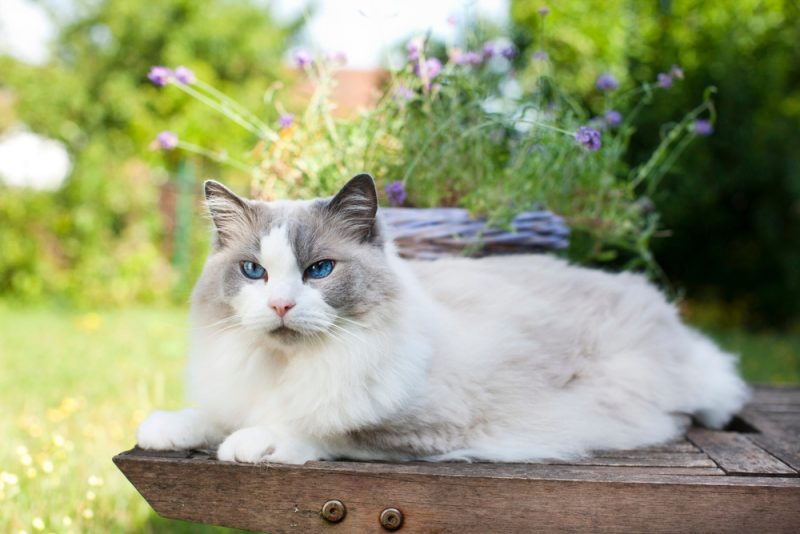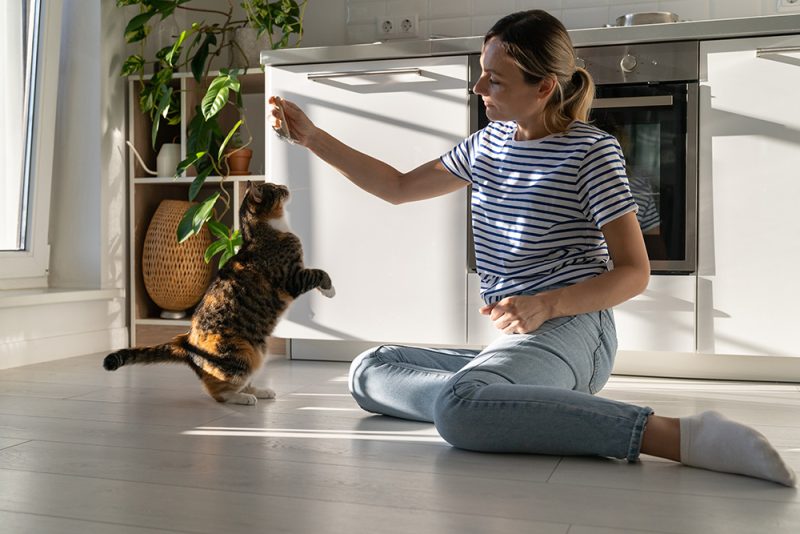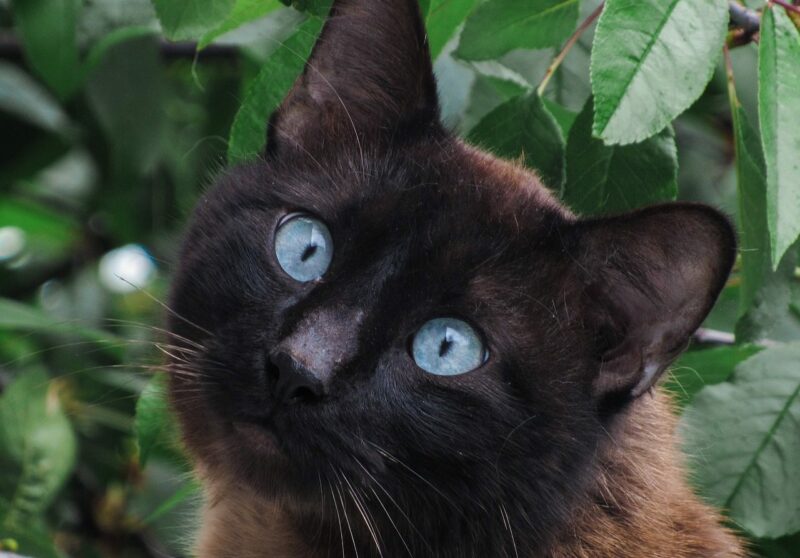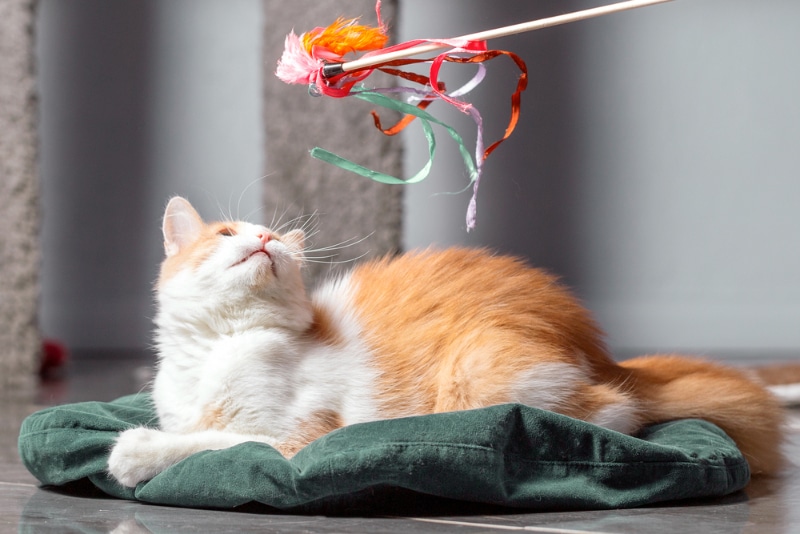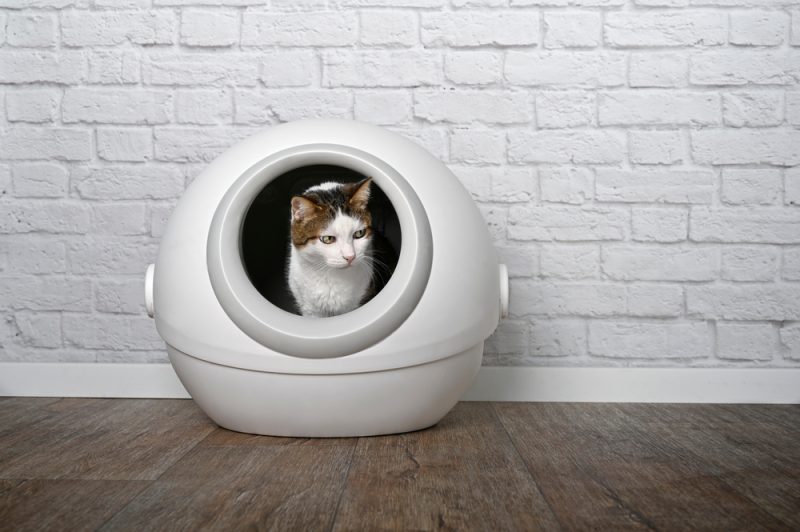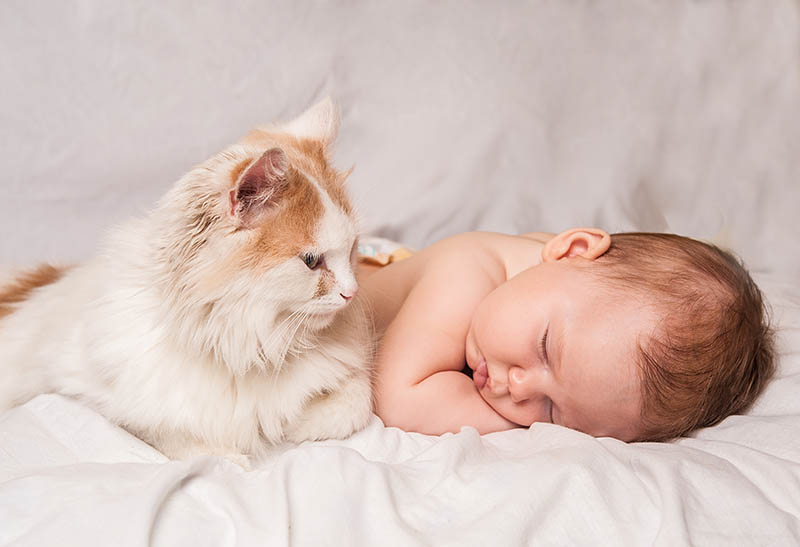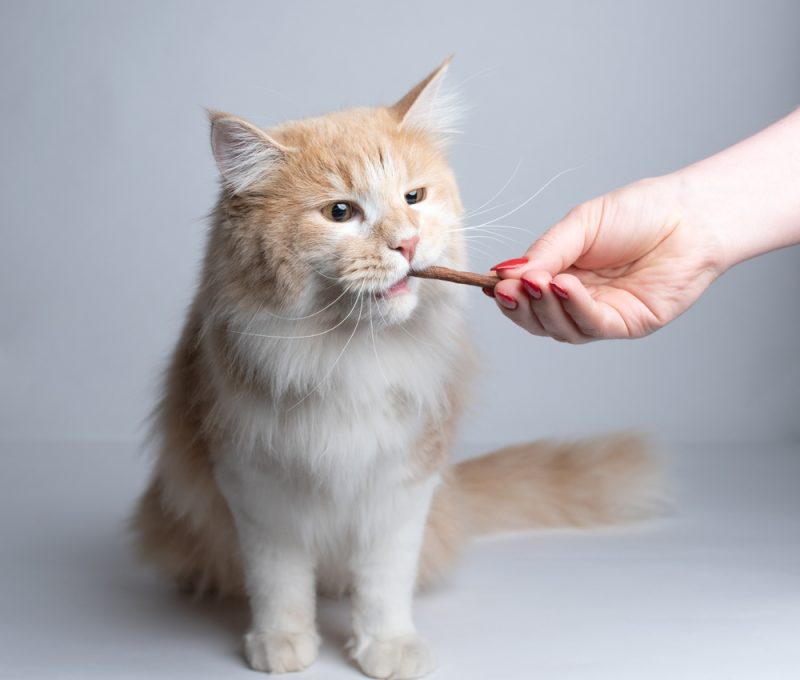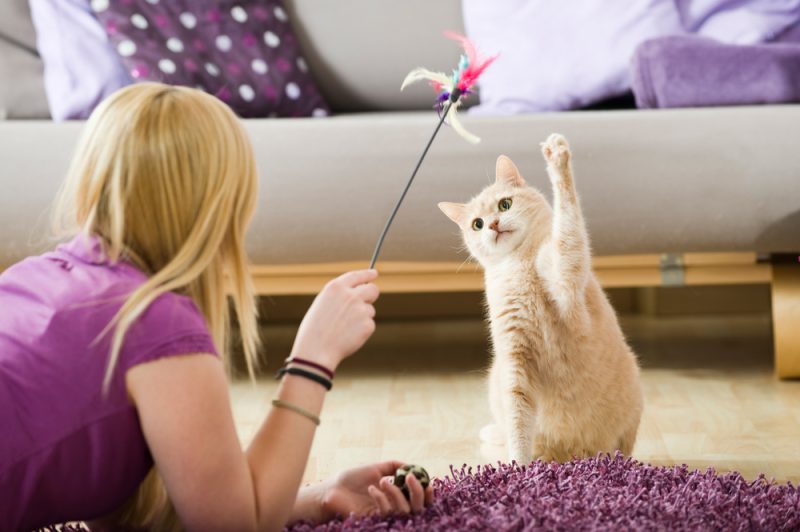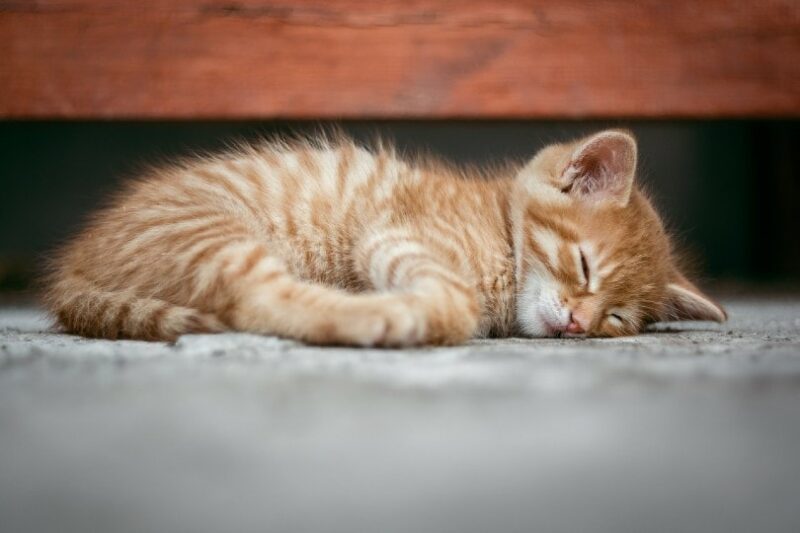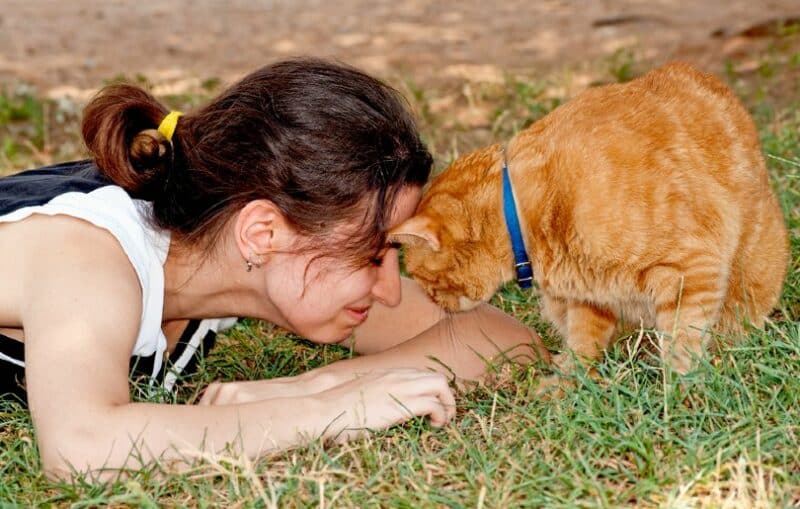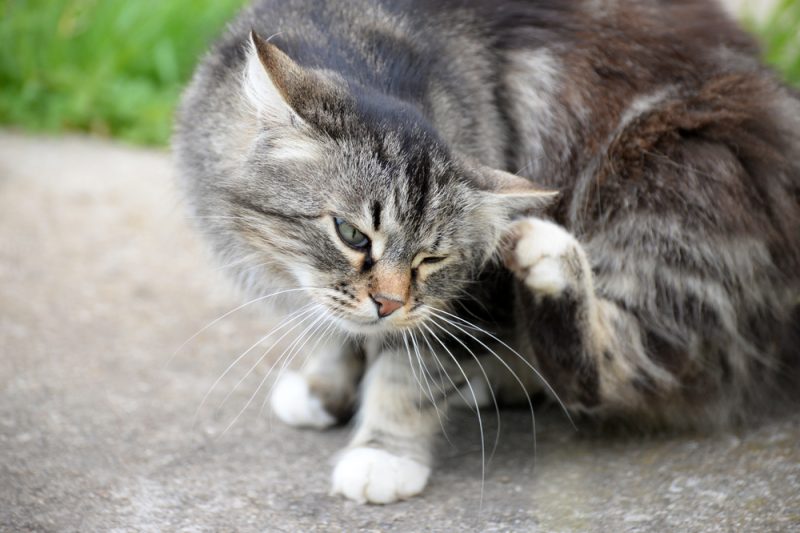In this article
It’s no secret that our feline friends shed. No matter if you have a short-haired or long-haired variation, they require frequent brushing and maintenance to keep their shedding at manageable levels, and even then, they’ll still shed! Cats are avid groomers; they are very clean and do an impeccable job of taking care of their coats. But no matter their coat type and how well they groom themselves, cats definitely shed more in summer.
However, there are a few cats that shed less than others, and some that don’t shed at all . We will explore all aspects of seasonal shedding and how you can manage or avoid it.

Cats Shed More Heavily in Warm Weather
It’s not just your imagination. Cats do shed more heavily in warmer months. They spend the entire winter bulking up their coats, especially if they go outdoors, in order to keep warm. In the warmer months, they continuously lose any fur that they don’t need to keep their bodies cool.
This natural process is your cat’s very own temperature regulation system. So, if you see your cat starting to lose all that winter fluff, know that it’s totally for their own good. As annoying as shedding can be, it’s manageable, and you can get through the seasons by keeping on top of grooming and vacuuming.
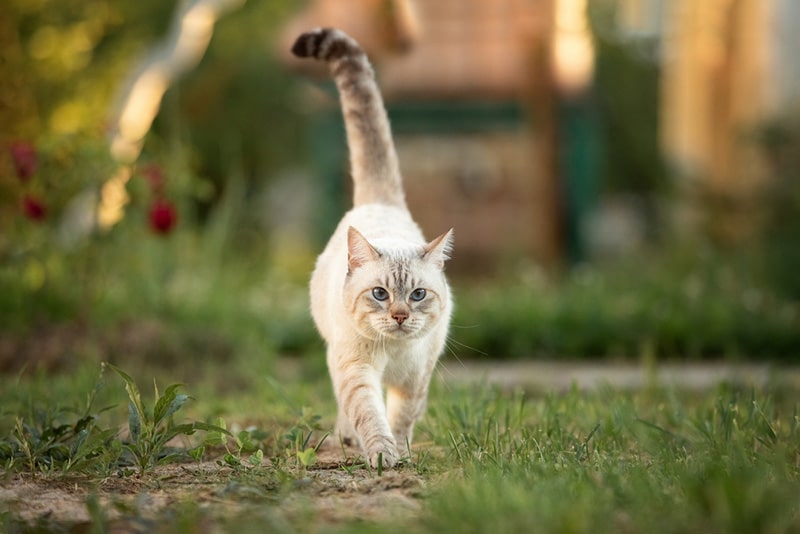
Indoor vs. Outdoor Cats: Who Sheds More?
All cats shed year-round continually; it is simply a part of the natural growth cycle. However, a slight difference exists between how much indoor or outdoor cats shed. Indoor cats tend to shed all the time, but ultimately less than their outdoor counterparts.
An indoor cat has access to a more constant temperature year-round, so there isn’t as much of a need to go through cycles of bulking up and thinning out the coat. So, while they may go through some peak shedding periods, their shedding level tends to just reflect the normal hair growth cycle rather than a dramatic debulking of a winter coat. A cat that spends time outside in the elements will need to bulk up their coat in winter, and therefore, shed that coat as the weather gets warmer.

Maintaining a Shedding Cat in Summer
Ultimately, grooming frequency will depend on how much your cat sheds. Many long-haired breeds might take more time to groom, but some short-haired breeds can shed just as much, particularly if they have dense coats, like the British Shorthair. So, it is important to have the right tools on hand to get the job done.
Brushes
You have a few choices with brushes. Slicker brushes and bristle brushes can be great for everyday maintenance. Heftier brushes, like deshedding tools, can get to the root and collect debris and shed. These brushes cannot be used more than once every month or more.
If you are looking for recommendations on the best cat brush, you should check out Hepper Cat Brush. You will hardly find different brush with so many pros - easy to clean, easy to use, durable and effective. Simply everything you need from a cat brush. Click here to order yours today.
Bathing
Cats are avid groomers but having a little help every once in a while is advised. You can bathe your cat once every 3 to 4 weeks. You can choose from many cat shampoos, and luckily, not all of them require water.
There are lots of pet shampoos to choose from, but some are much better than others. We love these two options created by Hepper, each offering something uniquely different. The Colloidal Oatmeal Pet Shampoo is an excellent choice for cats who require the occasional full bath, and the Waterless No-Rinse Dry Shampoo is perfect for felines that prefer to stay dry! Both are made with all-natural ingredients and pH-balanced formulas designed to gently lift away dirt and debris, leaving your cat's coat and skin soft and hydrated. Find out which is right for you in the table below.
Image
Product
Details
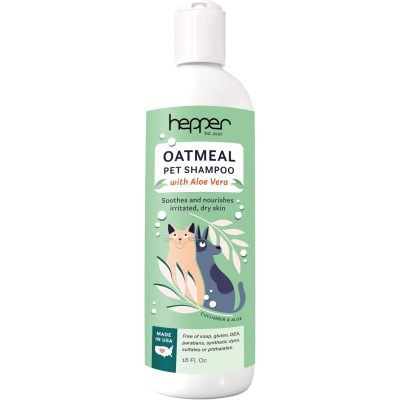
Hepper Colloidal Oatmeal Pet Shampoo
Check Price
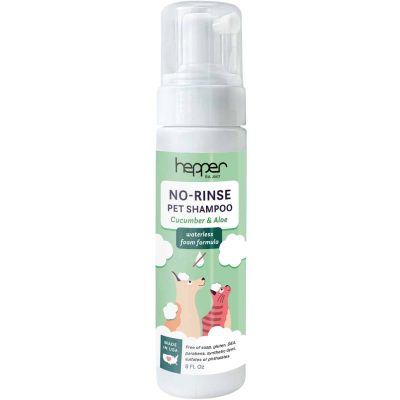
Hepper Waterless No Rinse Pet Shampoo
Check Price
Vacuum/Sweep
During peak shed seasons, it is paramount to clean regularly. Your cat’s hair will be sticking all over everything. The best way to manage it is to stay ahead of it.
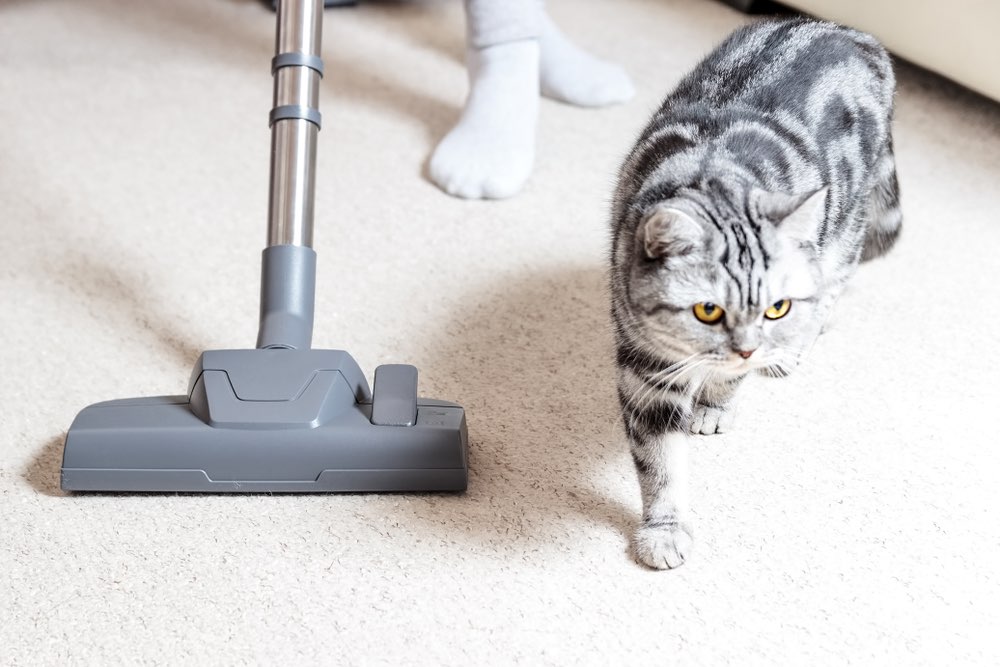
Damp Cloths
One way to help keep the fly-away fur to a minimum, particularly when brushing your shedding cat, is to use a damp cloth over their body, or pet-safe wet wipes.
Supplements
Consider adding a supplement to help boost your cat’s skin and coat health. These have been known to reduce shedding by increasing the strength of the hair, and less scratching as well.

Should You Shave Your Cat?
Shaving is not recommended as a means of reducing shedding, and in fact, can have the opposite effect. By altering their natural thermoregulation system, you may end up with a cat that is growing a thicker coat, which will mean more shedding.
However, if your cat’s coat has become extremely knotted, matted, and tangled, sometimes shaving is the best, and least stressful, way of removing the problematic fur. Additionally, if you have a particularly long, thick coated breed that goes outside, they may be grateful to be shorn in summer.
We don’t recommend shaving your cat yourself; their skin is surprisingly fragile and can tear easily without the right equipment or technique. Instead, find an experienced groomer or talk to a vet.
If you are concerned or have questions about your cat’s health, you can also speak to a vet from the comfort of your own home to help make a plan. They can determine when an in-clinic vet visit should be made.
If you need to speak with a vet but can't get to one, head over to PangoVet. It's an online service where you can talk to a vet online and get the advice you need for your pet — all at an affordable price!


Which Cat Breeds Shed the Most?
Some cat breeds, particularly those with longer coats, shed more than others, and need more attention when it comes to grooming.
- Maine Coon: The Maine Coon is an instantly recognizable breed with broad features and lion-like coat. They are truly lovely, but their long fur and dense undercoat mean extra work in the grooming department.
- Persian: The Persian is a brachycephalic cat, meaning they have large globe eyes with pushed in noses. They certainly look regal, and they have their very own fancy fur coats! Keep in mind they need to be brushed, brushed, brushed!
- Siberian: The Siberian cat is easily mistaken for the Maine Coon, but is less common. Unlike the Maine Coon, they have smaller ears and daintier appearances. They still require the same general coat care, though!
- Ragdoll: The Ragdoll is known for being one floppy cat. They have lustrous long coats and beautiful features—a firm family favorite.
What Are Low-Shedding Breeds?
Even though no cat is ever truly hypoallergenic, some are much less triggering than other breeds—and many of these kitties shed less than their other feline cousins.
- Ocicat: The Ocicat is a distant relative of the Siamese. They have leopard-like spots—mimicking their wild roots. Even though these cats aren’t completely hypoallergenic, they are thought to cause less reactions than some other breeds.
- Bengal: The Bengal is a newer breed that, like the Ocicat, has a coat that looks like their wild ancestors. These cats tend to act more like dogs and can easily learn to walk on a leash. They make the list for hypoallergenic cats, making them an excellent selection for a wider variety of lifestyles.
- Bombay: Bombays are not considered hypoallergenic, but they are low-shedders. These beautiful, intelligent black cats are great for families due to their good nature and potential for companionship. These cats tend to shed less than other breeds, though they still produce the allergy protein.
- Sphynx/Peterbald: The Sphynx and Peterbald are popular and instantly recognizable breeds due to their hairless bodies and ancient look. These cats actually sweat through their glands on the skin like us, creating an oil. So, these cats are not totally hypoallergenic, but they are about as close as you can get.
- Colorpoint Shorthair: The Colorpoint Shorthair is known for being highly intelligent and very alert. While not hypoallergenic by any means, these cats are well known for their reduced shedding in comparison to other breeds.
- Devon Rex/Cornish Rex: The Devon Rex and Cornish Rex have downy coats that barely shed. These soft-coated cuties sure are a pleasure to pet, and produce lower levels of skin oils than the Sphynx.

Hypoallergenic Cats: Are They a Thing?
Hypoallergenic cats are widely talked about in the feline community. Even though there are several claims of hypoallergenic breeds, there is actually no such thing as a completely hypoallergenic cat. Some cats shed less than others, but cat allergies aren’t caused by the fur itself, but by a protein known as Fel d 1.
The Fel d 1 protein is an allergen found in dander, saliva, and urine. Inevitably, with cats grooming so meticulously, they will spread this allergen, even if they don’t shed a lot. Some people can have a severe reaction to this substance, while others have a mild reaction or no reaction at all.
However, “hypoallergenic” cats shed less, and produce less dander as a result, leading to reduced aerosolizing of the Fel d 1 protein. However, they do still produce some of the protein. So, ultimately, the solid answer is no. No cat is ever actually completely hypoallergenic.
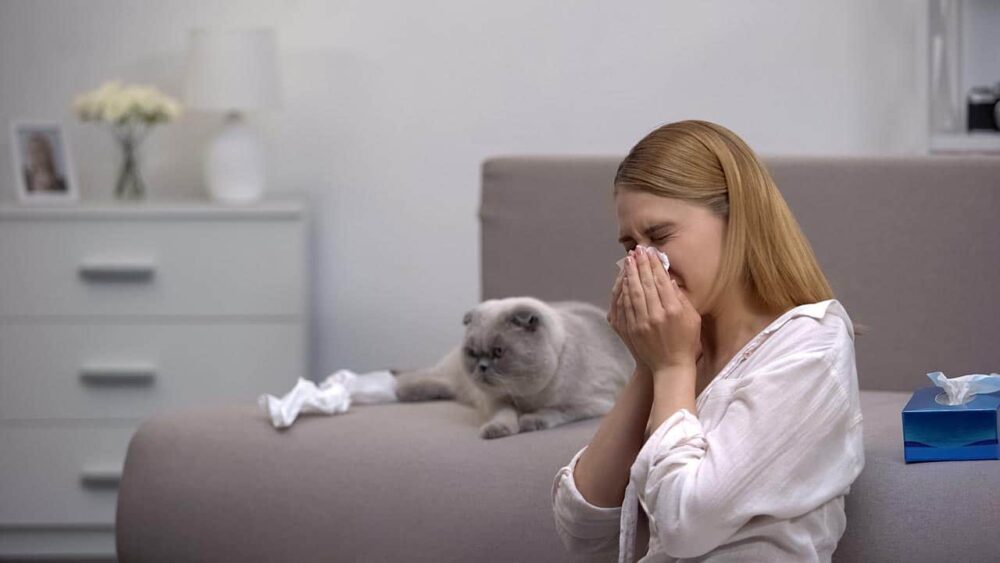

Conclusion
It’s not just your imagination—cats shed more in the summer, but there are some simple ways to manage it. Regular grooming and a powerful vacuum cleaner are your most effective tools to combat excess hair in your home.
Although indoor cats shed less fur in summer than those that spend time outside, they do tend to shed all year round.
See Also:
- Shedmonster Cat De-Shedding Tool Review – Pros, Cons, & Verdict
- Can a Cat Hair Pierce Human Skin? Vet-Approved Facts, FAQ & Advice
Featured Image Credit: absolutimages, Shutterstock
